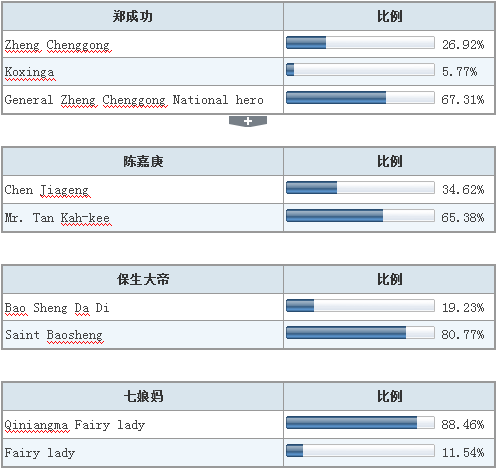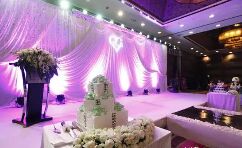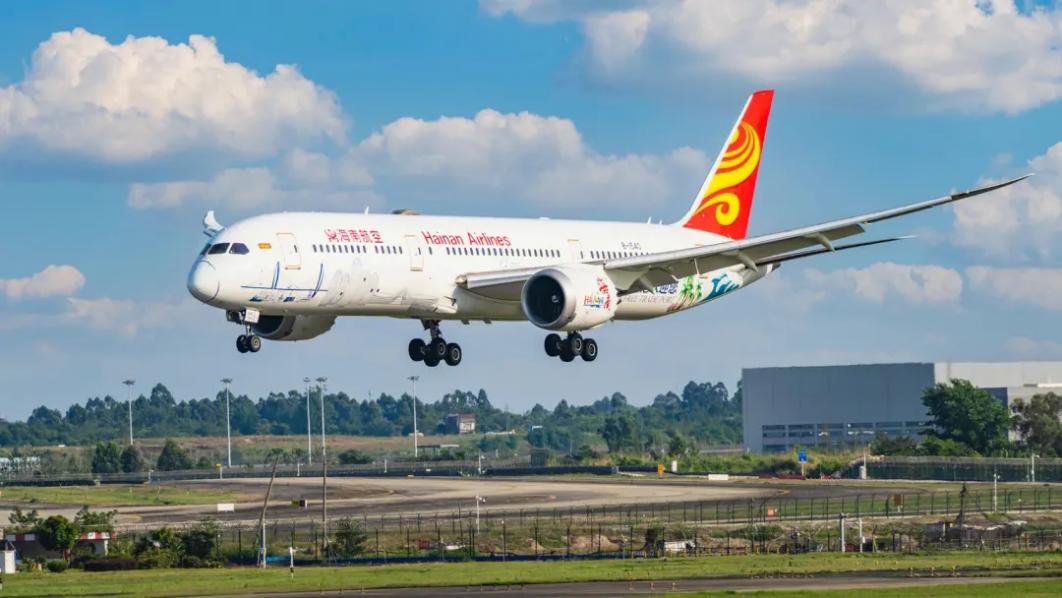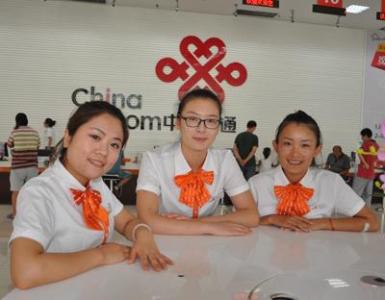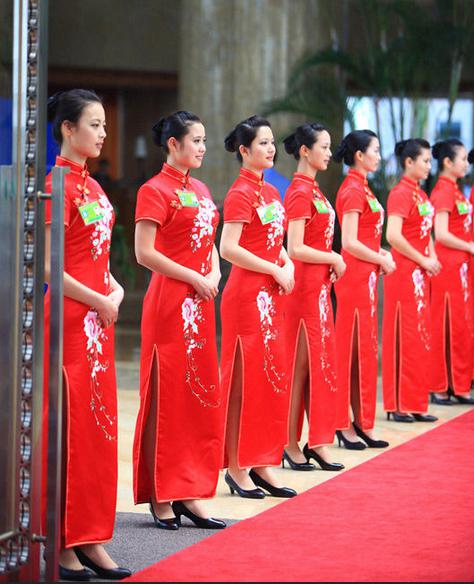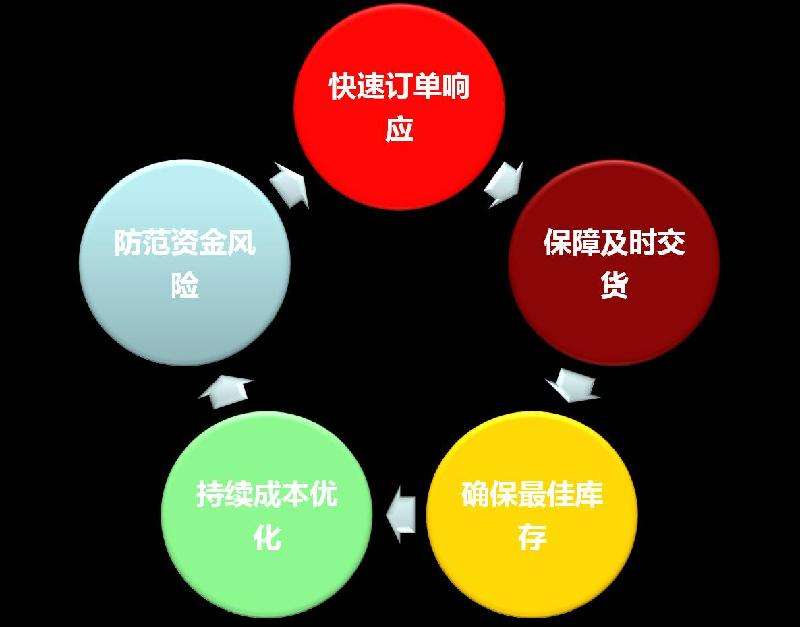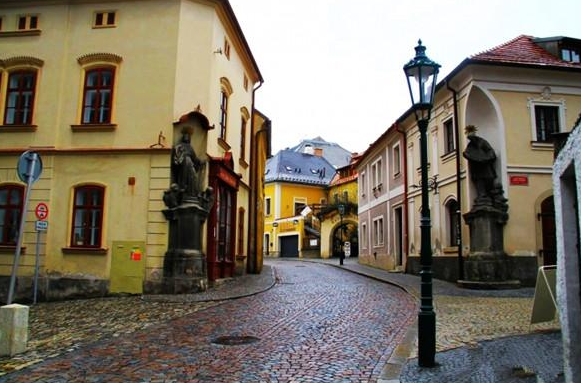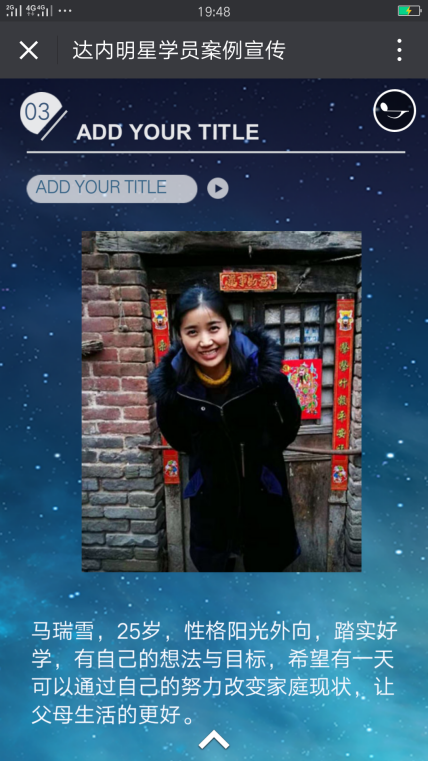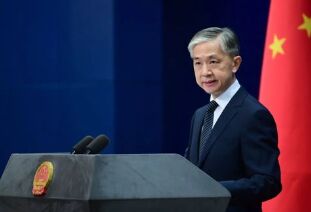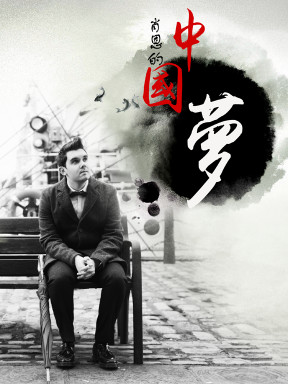苏ICP备112451047180号-6
论汉语文化负载词的不可译性
1. Introduction
Culture-loaded words refer to those which imply rich social and cultural meanings beside the conceptual meaning (Deng Hongshun, Tang Hongfang,2009:139-141).It is not only the embodiment of culture but also the crystallization of national wisdom, involving cultural history, religious belief, and social customs and so on. Culture plays a significant part in language. There is hardly a book on intercultural or interlinguistic relations between Chinese and English that doesn’t state that “dragon” is kindly and protective in Chinese, while it is baleful to Westerns; “red” represent ceremonial and happy in Chinese, however, it is cruel or frightening in English; mourning is black in English but white in Chinese; the sun is as oppressive in Arabic countries while it is lovely in England; among the most convincing fact given, therefore declaring the “impossibility” of translation. But this is not so. The only problem is the degree to which the cultural expression is to be interpreted in the translation (Peter Newmark,2006:74).
In accordance with John Catford, the famous British linguist and translation theorist, “Translation is the replacement of textual materials in one language by equivalent textual material in another language” (1965:20). Translation is based on the equivalent situational features between source language and target language. It is inevitable to lead to untranslatability, because of differences in language. That is to say that meaning can not be completely transferred between two languages. In consideration of this, John Catford classified untranslatability into two parts: linguistic untranslatability and cultural untranslatability (1965:20). Due to linguistic and cultural differences, certain degree of untranslatability of culture-loaded words are bound to exist, thus posing difficulties for translating them.
This paper which is mainly divided into three parts, aims to discuss different types of untranslatability and explore an appropriate translation methods. The first part comes up with an introduction of culture-loaded words and two types of untranslatability. The latter part chiefly deals with the advantages and disadvantages of different types of translation strategies. Finally, to the different culture-loaded words, the paper put forwards with appropriate translation methods in the hope to help translators bridge cultural gap and refine their translation skills.
2. An overview of culture-loaded words
2.1 Definition of culture-loaded words
Culture-loaded words refer to words or phrases which convey a certain kind of cultural connotations or associations which may or may not be found in other languages or cultures. They are those vocabulary which best embody cultural information. Therefore, culture-loaded words are rich in cultural meaning and associative meaning. Cultural meaning and associative meaning behind the cultural-loaded words make great difficulties for interpretation and translation, as those two layers of meanings are different from the meaning we look up in the dictionary for the most part, which is known as thematic meaning or conceptual meaning. Language is the carrier of culture; language is the sediment of culture; and language is the reflection of national characteristics, historical and cultural background. The national outlook on life, values, and ways of thinking can also be found in language. From those reasons, boundaries between different cultures are manifested through culture-loaded words. How to handle well of those culture-loaded words become the focus of translators.
A case in point is translation of Zheng Chenggong, the famous national hero in the late Ming and early Qing dynasties, is a trouble to translators as a culture-loaded word of historical figure. Organized orphans to fight for his country and retook Taiwan for reunification of China, the name of Zheng Chenggong stands for unyielding, heroic struggle, and patriotic spirit. In China, once mentioned Zheng Chenggong, people’s heart will be full of power. But if we translate his name into Zheng Chenggong, all people get is a Chinese name. We can not feel the spirit at all. However, when we translate it into “General Zheng Chenggong National hero”, it makes a difference. To justify translation methods for translating culture-loaded words, it is the aim of this paper, which may improve spread of Chinese culture greatly.
2.2Classification of culture-loaded words
Different scholars have different criteria to classify culture-loaded words. The famous translator and translation theorist Peter Newmark divides culture-loaded words into those levels: ecological cultural words, material cultural words, social cultural words, organizational, active, procedural, conceptual cultural words and so on (2006:69). After collecting a large number of tourism materials, some culture-loaded words with characteristic of Southern Fujian (also known as Minnan) are selected. According to attribute of words, it is reasonable to divided culture-loaded words into four types. They are historical figures, folk-custom, toponymy, and catering culture words.
3. Untranslatability of culture-loaded words
3.1 Introduction of untranslatability theory
John Catford, the famous British linguist and translation theorist, holds the view that “Translation is the replacement of textual materials in one language by equivalent textual material in another language” (1965:20). Only on the basis of the equivalent situational features between source language and target language can the translation play a part. It is unavoidable to lead to untranslatability, because of differences in language. That is to say that meaning can not be completely transferred between two languages. In view of this, John Catford classified untranslatability into two parts, linguistic untranslatability and cultural untranslatability (1965:20).
3.2 Linguistic untranslatability of culture-loaded words
Linguistic untranslatability is caused by the lack of lexical or syntactical substitute between source language and target language. It is mainly manifested from two aspects: for one thing, many words or grammatical units in the source language share the same linguistic form. The other is that it is hard to find corresponding relations between two languages towards polysemy.
Put it another way, the inequivalence of culture-loaded words comes form the lack of lexical gap or somatic zero towards conceptual meaning (Guo Xuming,2011:73).The conceptual meaning refers to the meaning of vocabulary. Based on semantics, lexical meaning can be divided into conceptual meaning, emotional meaning, style meaning and metaphorical meaning (Zhu yiping,2005:34).It is bound to have untranslatability for the difference of phonological, syntactic, semantic and pragmatic between Chinese and English(Chen Junming,2013:28-31).
For example, words like“祖庙、床母、天公生、答嘴鼓、上火、去湿、针灸的‘酸,胀,痛,麻’、福娃、土楼、土笋冻”are from culture in Southern Fujian, stranger to English culture. It is hard to find corresponding English words since those words contain rich Chinese or local culture.
During the practice of translation, the combination of transliteration, free translation and paraphrasing are usually adopted. When it comes to guiding translation methods, however, it all depends on translator’s tendency. The most important thing is that we should put the spread of culture connotation in the first place, but not the literal meaning of the word. For instance, Chinese value highly of “五讲、四美、三热爱”. If we translate it into “Five stresses, four beauties and three loves ”, we can easily find we change the original meaning through retroversion, which could be interpreted as “五点强调、四大美人和三种爱”. In order to convey the substantial meaning, it can be translated in this way “Five manners to promote, four virtues to advocate and three passions to strengthen”.
3.3 Cultural untranslatability of culture-loaded words
Cultural untranslatability of culture-loaded words is caused by lacking relevant situational features between source language and target language (Catford, 1965:54). The non-corresponding and non-coincidence of the words are the result of different historical tradition and social background. In this respect, cultural untranslatability stems from culture difference, which is due to the geographical environment, historical development, social system, religious belief, customs and other aspects of differences. What’s more, the manifestation of inequivalence is partly on the fake equivalence of vocabulary. The cultural meaning(associative meaning) of the words refers to the emotional meaning, stylistic meaning and figurative meaning besides conceptual meaning (Guo Xuming,2011:73). Even when we find words form two languages with same or similar literal meaning between two languages, their cultural meaning may not be the same (Chen Junming,2013:02). Two types of inequivalence can be found as the following.
First, words from two different languages have the same conceptual meaning, but with different or even opposite cultural meaning (Chen Junming,2013:28-31).Under the influence of culture, different languages invest with different cultural meaning towards the same object. It is not difficult to find words can interpret the same thing from the conceptual meaning level. For example, we all know that “fox” refers to a kind of animal. That is the conceptual meaning of a word. In Chinese, however, “fox” is always sidelined. It’s the symbol of vicious and cunning. However, when it comes to “fox” in English, people may consider it as clever. No wonder there is a saying that “fox is not taken twice in the same snare”. We find that when it comes to the cultural meaning, people from different cultures can not reach an agreement. Also, the translation of “龙” is a typical example. If “望子成龙” is translated into “to expect one’s son to became a dragon”, may shock English readers as dragon is the most evil demons in western culture.
Second, words from two language can share the same conceptual meaning, but they lack corresponding cultural meaning. This kind of vocabularies mainly focus on historical allusion, culture and religion (Zhu Yiping,2005:159-164). For example, “天公生” is said to be the exact birthday of Jade Emperor, ceremonies are held in Buddhism and Daoism temples and nunneries to celebrate, when local people hold worshiping rituals at home. It is regarded as important as birthday of Buddha, Goddess Matzu and Saint Baosheng. If we translate “天公生” into “Birthday of the God”, English readers may consider it as Christmas. Therefore, a proper translation of “天公生” is “Birthday of Jade Emperor”. Another example is “白虎岩”. In southern Fujian dialect “岩” refers to a small temple on the hill. People used to worship Buddha. So it’s definitely wrong to translate “岩” into “rock”.
3.4 Untranslatability of Southern Fujian culture-loaded words
The culture of Southern Fujian is born with ancient and open features, because it is surrounded by mountains and sea. In a broad sense, the culture of Southern Fujian can be classified into farming and maritime commerce. If not so, in a narrow sense, it includes architectural, folk custom, religion, folk art and clansman (Hong Li,2012:93-97). No matter what kind of classification it is, the expression of language contains local people’s outlook on life, value, ways of living and ways of thinking.
After the study of Southern Fujian culture-loaded words, a general rule can be drawn. Above the four types of culture-loaded words, including folk custom, historical figures, toponymy, catering culture-loaded words, the difficulty of translating folk custom culture-loaded words is due to the linguistic untranslatability. Because those words chiefly represent unique Chinese culture activities, it is hard to find correspondent concept in western country.
As for the cultural untranslatability, it mainly focuses on historical figures, toponymy, and catering culture-loaded words. We can find the same conceptual meaning of the word, but they convey different cultures in different country.
4. Translation strategies of culture-loaded words
4.1 Transliteration of culture-loaded words
Transliteration is one of the earliest translation methods. Using the same or similar pronunciation, transliteration has been widely applied. Transliteration can effectively keep source language culture and folk customs. It’s known for its conciseness and conforming to the theory of alienation. With the advancement of China’s international status in recent years, Chinese culture has attracted widespread attention around the world. Base on this reason, some Chinese culture-loaded words have been recognized by Englishman. For example, 叩头(Kowtow)、阴阳(Yinyang)、气功(Qigong)、风水(Fengshui).
For English readers who don’t have any Chinese cultural background, however, this kind of translation makes them feel unintelligible because of failure in cultural presupposition. For example, 厦门万石植物园的小桃源is translated as Xiaotaoyuan. For English readers, Xiaotaoyuan is just a name of a place, as they don’t know the famous essay Peach-Blossom Spring wrote by Tao Yuanming. How can they understand the peace and joy, freedom and equality behind this so-called Xiaotaoyuan? 南音(又称南管、南曲)Nanyin (also known as Nanguan or Nanqu), can’t convey the melody of music. With great cultural and artistic value, Nanyin is well-known as “a living fossil of Chinese music”, bearing traces of ancient Chinese music. And there are plenty of examples, 尾牙Weiya,鱼皮花生Yu Pi Hua Sheng, they are typical cultural default. It is hard to understand what the essence is.
4.2 Literal translation of culture-loaded words
Literal translation can not only be sought with the original consistency in form, but also fully reflects the original style of the source language. Meanwhile, from the sentence structure level, literal translation contributes greatly to build new syntactic structure and expression, which promotes the enrichment and development of target language. It will not produce noise in information transfer process. In this way, English readers can feel the unique culture and inspire the interest. Gradually, with this kind of expression, it effectively combines the meaning with image. People can have a picture in mind clearly when coming across the word. For example, it is a good way to retain the original metaphor and rhetoric effect by translating “纸老虎” into paper tiger. The paper tiger is used to describe people who is outwardly strong but inwardly weak ; “半边天”as half of the sky. It is likened to women who can play an equal part in the new society. It is mainly used to emphasize or praise the important role of women or wives.
However, due to the inconsistent of surface structure and deep meaning, as well as the difference of culture background, people may have different ways of thinking and expression. Literal translation can’t accurately convey the meaning, which results in misunderstanding and loss of meaning. For instance, if we translate “土笋冻” into Worm Jelly or Sea worm Jelly, it’s unacceptable for English readers to eat such kind of food which is made of worm, as it sounds disgusting. When “鳌园” is translated as Turtle Garden, English readers may consider it as a zoo where there are many turtles. Actually, it’s built by Mr. Tan Kah-kee. It is a garden that consisted of porch, monument and the tomb of Mr. Tan Kah-kee.
4.3 Cultural Equivalent of culture-loaded words
Borrowing culture and language environment that Westerns are familiar with, the literal translation can show the content of source language(Wu Wenyan,2014:166-170). Information default and culture crash can be avoided. This kind of translation method can work because it is possible to find some similar expressions in two languages. Like “七娘妈” which is a word full of southern Fujian’s features. The day for Qiniangma Fairy Lady falls on the seventh day of the seventh lunar month. On that day, fairy lady Weaving Maid is worshiped by local people with flowers, fruits, vegetables and a delicate paper pavilion called “Pavilion for Qiniangma Fairy Lady”, as she is regarded as a patron saint of babies. So we may translate it into “Fairy lady”.
However, trying to find the same or similar expression, translators need to have rich knowledge and cultural background. For one thing, even there are some similar expressions between two languages in form; sometimes they don’t convey the same meaning, however. For example, “pull one’s leg” means making fun of sb. but not “拖后腿” in Chinese. Also, since some words are borrowing from other culture, it can’t completely show the essence. For example, it is inappropriate to translate “答嘴鼓” into “talk show”. As a folk art highly welcomed by local people, it is popular among Min’nan area, Taiwan and Southeast Asia countries, in which two comedians entertain audiences by bantering each other with humors talks. Dazuigu is a phrase from local dialect, meaning storytelling in crosstalk to amuse audiences. It is a unique local culture preserving vivid and age-old vocabulary, slang and idioms in Min’nan dialect.
4.4 Transliteration combines with free translation or paraphrasing
Transliteration combines with free translation or paraphrasing can effectively improve English readers understanding because it neglect the cultural factors of the source language. It makes sense for avoiding over alienation of target language. Moreover, transliteration combines with free translation or paraphrasing play a significant role in maintaining stabilization and national features of target language. Like 郑成功(General Zheng Chenggong, a national hero in late Ming Dynasty);尾牙(Weiya ,year-end sacrifice and feast).
But sometimes, this translation method is unable to convey the concept of lexical meaning fully. For example “春仔花” is translated as “Chun’zai Flower”. Is it a kind of flower? Chun’zai Flower, or Chun Flower, in Min’nan area is certain embroider flower bearing an implication of enjoying abundant life every year. Longevity flower represents good wishing, and grate is for bereavement. And Like “Zongzi, a rice pudding/dumpling wrapped up with weed leaves” can be understood as other similar food. Some words were known by English culture in the long-term communication. So there is a saying that rather than the success of the translation, it’s the achievement of the communication.
5. How to overcome untranslatability factors in translation
5.1 Principle of translation strategies
The aim of translation is to let English readers know and understand Chinese culture better. In general, as a significant medium for foreigners to learn about China, publicity materials translation is an irreplaceable mean to promote its culture to the outside world. It goes without saying that the spread of Chinese culture and audience demands should be put in the first place. Involving a large number of culture-loaded words, difficulty is bound to exist in tourism translation. At the same time, it is differences and complexity of Chinese and English demand that a flexible translation method. Only in this way, can we reduce obstacle in information transfer process.
There are three principle when dealing with culture-loaded words, including retaining the original culture information, conforming to target language’s expression habit, and adapting to foreigners’ way of thinking (Wu Wenyan,2014:166-170).
To see clear which kind of translation convey the cultural meaning effectively, a questionnaire is made among English readers, Chines students from English major. In the questionnaire, different versions of translation are provided. With interesting results, which provides hints for adopting translation methods.
5.2 Translation approaches to overcome linguistic untranslatability
As for culture-loaded words emerging from philosophy, folk custom and historical records, Chinese culture characteristic is an inseparable part to form them. The key point of the translation is not to find corresponding vocabulary, but seek to keep Chinese cultural characteristics as well as put cultural information across effectively (Jin Huikang,2006). Base on this reason, the translation method, should focus on literal translation, cultural equivalent and transliteration combined with free translation or paraphrasing, which means that transliteration is not recommended in the translation of folk custom culture-loaded words.
Let’s take the translation of “保生大帝” as an example. There are many versions of translation, covering Bao Sheng Da Di, Bao Sheng the Great, and Saint Baosheng. But from the result of the questionnaire, Saint Baosheng is more acceptable.
It uses cultural equivalent, borrowing what the western readers familiar with are, to translate the Chinese culture-loaded words ( P.Newmark,2001). Saint Baosheng cult is popular in southwest Fujian Province, eastern Guandong Province, Taiwan and Chinatowns in Southeast Asia countries, with Tze Chi Temple at Qingjiao Village in Xiamen and Tze Chi Temple at neighboring Baijiao Village in Longhai City as its origin. Traditional activities induce praying for prescription by sortilege, telling fortune by sortilege, praying for help, worshiping ceremony on death day and tour. For English readers, a saint is a person who is recognized as having an exceptional degree of holiness, or likeness to God. While the English term “saint” originated in Christianity, historians of religion now use the appellation “ in a more general way to refer to the state of special holiness that many religious attribute to certain people” (Lindsay Jones,2005). So here cultural equivalent is a better choice to translate “保生大帝”.
5.3 Translation approaches to overcome cultural untranslatability
Cultural untranslatability is the result of culture difference among countries. When two words share same conceptual meaning, yet with different even opposite meaning, the key of translation is trying to find an appropriate replacement or explanation (Chen Junming,2013:93-97).
5.3.1 Historical Figures
No matter it is English translation or Chinese translation, there are two top principles. They are “complying with the original forms of expression” and “complying with the conventional expression”. As far as the translation approach is concerned, transliteration is usually suggested (Wang Bingqin,2007).
Chinese name and English name demonstrate cultural difference. First of all, the different sequence of family name and first name between Chinese and English. People are identifiable by both given name and surname. However, the sequence of family name and first name is totally opposite between countries. For Chinese, Korean, Vietnamese, and Thai, people’s name consists of family name and is followed by first name (Wang Bingqin,2007). A westerns, however, put the first name ahead and is followed by family name. This kind of difference displays the idea towards “universality and individuality” between East and West.
Certainly, it is not hard to express the linguistic meaning when translating a name. In other words, even foreigners don’t know the implication of name; it will not impact the understanding of the whole passage. Of course, it is not a good idea to be satisfied with this level. What we want is trying to convey the cultural meaning of a name as much as possible. For this reason, transliteration combines with paraphrasing is a better way to add historical back ground, which can enrich the character’s image and increase acceptability and understanding.
For example, “陈嘉庚” was a Chinese businessman, community leader and philanthropist active in Southeast Asia, Hong Kong, and Various Chinese cities. He was a prominent figure in the overseas Chinese community of Southeast Asia in the 20th century, and was responsible for gathering much support from the community to aid China in major events. He is well-known and so does his name. There is a conventional expression called “Mr. Tan Kah-kee”in the world. It is inappropriate to translate “陈嘉庚” into Chen Jiageng.
As we mentioned before, the translation of Zheng Chenggong is just a Chinese name to English readers. We can not feel the unyielding, heroic struggle, patriotic spirit at all. If we translate it into “General Zheng Chenggong National hero”, it makes a difference.
5.3.2 Toponymy
The translation of toponymy culture-loaded words lay particular stress on cultural connotation. Of course linguistic expression should also be took into consideration. It goes without saying that the translation of toponymy culture-loaded words becomes the most difficult one for achieving idyllic and impressive. From the result of the questionnaire, transliteration and free translation are the better choice.
Unfortunately, quite a few of translators lack serious attitude towards toponymy culture-loaded words, which impede cross-cultural communication from a large extent. A large number of spelling mistakes can be commonly seen in publicity-orientated material (Chen Gang,2004:325-327). For example, translate “西泠桥”(杭州“三大情人桥”之一)into“Xileng Bridge”(Wang Jun,2000:154). Therefore, it is not only play a negative effect in normalization of Chinese phonetic, but also against translators’ professional competence. Chinese phonetic is a kind of phonetic symbol that close to human communication. It counts to pay more attention to normalize.
Published in the 1990s, as the authoritative geographical names gazetteer “Merriam Webster’s Geographical Dictionary” stress the principle of complying with the original forms of expression. Under this big principle, there are two rules should be noticed. First, is retaining the original image and connotation. For instance, it is better to express“三潭映月”as “Three Pools Mirroring the Moon”, instead of “Santanyinyue” (Wang Jun,2000:158). Second, is retaining the original culture and pronunciation. In this respect, it may as well say that transliteration and free translation are widely adopted. Take “城内城”as an example, a ridiculous Great Clearance was decreed around 1661 during the reign of Emperor Shunzhi, which built border city walls, burned everything outside ashes and moved people 30 li (15 kilometers) away from sea, resulting in the building of border cities such as Chengneicheng City. It was not until 1679 in the eighteenth year during the reign of Emperor Kangxi that the decree was abandoned, together with Chengneicheng City. So it is suitable to translate “城内城” into “Ruins of Chengneicheng City”.
5.3.3 Catering culture
Catering culture is not an abstract conception. It runs through details of our life, including local ingredients, unique culinary wares and utensils, specialties and home dishes, feasts with strong regional features, dining rites, and table manners.
Commonly, literal translation is use widely in translating catering culture-loaded words, because what the guest care most is what he eats. For the translators, finding the key material of the dish is the first step. Then, the culture shock awareness should not be ignored, however. For example, westerns could not accept food make of worm or animal’s claw. If you want to introduce a dish, those words should not be there. Like, translate “土笋冻” into “Tusundong Jelly” instead of “Worm Jelly ”. Let’s take “沙茶面” as another example. It is golden in color, fresh and thick in quality, strong and hot in taste. The secret lies in Satay Sauce, which is prepared with various burdening. With interesting background story, the snack is well-known for appetizing looking, strong smell, hot and thick soup. An indispensable part of local life, it is around any corner in Xiamen as a window to local food and local life. So it is understandable to translate “沙茶面” into “Noodle with Satay Sauce”.
To help you have a clear ideal of translation methods as mentioned, here is a table for you to reference.
6. Conclusion
To sum up, language is the carrier of culture, language is the sediment of the culture, and language is the recorder of culture. Under the influence of history, religious belief, and social customs, it is inevitable to pose difficulties for translating culture-loaded words. In view of this situation, high cross-cultural awareness for translators is demanded. They should strive to bridge cultural gap by choosing translation approaches flexibly so as to convey cultural information and its connotation. There are many kinds of traditional translation methods, like transliteration, literal translation, and transliteration combined with free translation or interpretation, which confused us. In order to overcome two types of untranslatability, guiding translation methods can be driven through questionnaire. Above all, only when translators keep improving their bilingual and bicultural competence can readers truly explore the fun of culture.
References
Catford, J.C. 1965. A Linguistic Theory of Translation. Oxford: Oxford University Press.
Jones, Lindsay. 2005. Thomson Gale Encyclopedia of Religion (in Tajik). Sainthood (Second ed.). Macmillan Reference USA.
Nida, EugeneA.2001. Language, Culture and Translating. Shanghai:Shanghai Foreign Language ssss Education Press.
Newmark, P. 2001. A Textbook of Translation. Shanghai: Shanghai Foreign Language Education
S s Press.
Newmark, P. 2006. About Translation. Beijing: Foreign Language Teaching And Research Press.
Wang, Jun. 2000. Touring China: Selected Tour Commentaries (Volume I). Beijing: China Travel and Tourism Press.
Chen Junming[陈君铭], 2013, 谈汉语文化负载词的不可译,《淮南师范学院学报》,04:28-31。
Chen Junming[陈君铭], 2013, 基于词汇对应关系的汉语文化负载词翻译策略分析,《西南农业大学学报》,02。
Chen gang[陈刚], 2004, 《旅游翻译与涉外导游》。北京:中国对外翻译出版公司。
Deng Hongshun[邓红顺],Tang Hongfang[唐红芳], 2009, 异化:全球化语境下汉语文化负载词的翻译策略,《黄冈师范学院学报》,04:139-141。
Guo Xuming[郭旭明], 2011, 从生态翻译学视角看全球化语境下汉语文化负载词的英译, 《中南林业科技大学学报》,06:73。
Hong Li[洪莉], 2012, 生态翻译视域下的闽南文化负载词翻译,《泉州师范学院学报》,03:93-97。
Jin Huikang[金惠康], 2006, 《跨文化旅游翻译》。北京:中国对外翻译出版公司。
Wu Wenyan[吴文艳], 2014, 外宣翻译中文化负载词的英译原则与方法,《湖南科技大学学报》,06:166-170。
Wang Bingqin[王秉钦], 2007, 《文化翻译学-文化翻译理论与实践》。天津:南开大学出版社。
Zhu Yiming[朱益平], 2005, 论旅游翻译中文化差异的处理,《西北大学学报:哲学社会科学版》,05:159-164。
Acknowledgments
In writing this paper, I have benefited from the presence of my teachers and my classmates. They generously helped me collect materials I needed and made many invaluable suggestions. I hereby extend my grateful thanks to them for their kind help, without which the paper would not have been what it is.
Particularly, “Rome is not built in a day.” My thesis is neither written in a day nor only with my own efforts. Here, My deepest gratitude goes first and foremost to Associate Professor Qiu Yihong, my supervisor, who guided me throughout my writing of this thesis. She carefully read the whole draft and offered painstaking and precious criticism. She always used a simple question to inspire me a lot, gave me much freedom to let find the topic I really would like to say and encouraged me to go deeper with her tolerance and trust.
Further, I would like to thank Chen Junming, whose energetic, heuristic and patient teaching. At very beginning, I doubted it was a new and unfamiliar dimension with a vague concept. I was so lucky to hear his comments, “people would feel perturbed and cautious but excited and inspired when on the road to a new and unfamiliar place, even me, why not try and go ahead.” His professional academic observation and concentration has impressed me deeply. Also, he provide me a large number of first hand materials, which help me much.
Furthermore, none of this would have been possible without the help of those individuals and organizations hereafter mentioned with gratitude: our school library and its staff, the library of Xiamen University of Technology and its staff.
Appendix
Here is the result of questionnaire.
【摘要】文化负载词是民族智慧的结晶,由于不同文化在文化习俗、语言结构和思维习惯等方面的差异,文化负载词存在一定的不可译现象。文化负载词的翻译成为译界中的难题,翻译时究竟依据什么选择翻译策略,缺乏指导性的原则。因此,对文化负载词翻译策略研究仍存在较大的空间。本文意在借助问卷调查的方式,以闽南文化负载词翻译为例,通过对文化负载词不可译分析,认识不可译的因素及其影响。学习英文文化负载词翻译的长处,针对不同类似的文化负载词探究出恰当的翻译策略。在数据支撑和可供参考操作方法的支持下,规范完善文化负载词的翻译。
【关键词】文化负载词; 不可译性; 翻译策略; 闽南文化
A Study on untranslatability of Chinese culture-loaded words
Abstract: Culture-loaded words are crystallization of national wisdom. Due to linguistic and cultural differences, certain degree of untranslatability of culture-loaded words is bound to exist, thus posing difficulties for translation. Since lack of a sufficient study on this point, there is a miraculous room for a systematic study on untranslatability of culture-loaded words. Based on the first hand survey about translation of Southern Fujian culture-loaded words, this paper is intended to analyze untranslatability factors, untranslatability causes as well as influence by the means of questionnaire, to justify proper translation strategies and tactics for translating cultural loaded words, and to provide a theoretical framework to standardize translation of culture-loaded words.
Key Words: culture-loaded words; untranslatability; translation strategies; Southern Fujian culture
Contents
1. Introduction 1
2. An overview of culture-loaded words 2
2.1 Definition of culture-loaded words 2
2.2Classification of culture-loaded words 2
3. Untranslatability of culture-loaded words 4
3.1 Introduction of untranslatability theory 4
3.2 Linguistic untranslatability of culture-loaded words 4
3.3 Cultural untranslatability of culture-loaded words 5
3.4 Untranslatability of Southern Fujian culture-loaded words 6
4. Translation strategies of culture-loaded words 7
4.1 Transliteration of culture-loaded words 7
4.2 Literal translation of culture-loaded words 8
4.3 Cultural Equivalent of culture-loaded words 8
4.4 Transliteration combines with free translation or paraphrasing 9
5. How to overcome untranslatability factors in translation 10
5.1 Principle of translation strategies 10
5.2 Translation approaches to overcome linguistic untranslatability 10
5.3 Translation approaches to overcome cultural untranslatability 11
5.3.1 Historical Figures 11
5.3.2 Toponymy 12
5.3.3 Catering culture 13
6. Conclusion 15
References 16
Acknowledgments 17
Appendix 18
【关键词】文化负载词; 不可译性; 翻译策略; 闽南文化
A Study on untranslatability of Chinese culture-loaded words
Abstract: Culture-loaded words are crystallization of national wisdom. Due to linguistic and cultural differences, certain degree of untranslatability of culture-loaded words is bound to exist, thus posing difficulties for translation. Since lack of a sufficient study on this point, there is a miraculous room for a systematic study on untranslatability of culture-loaded words. Based on the first hand survey about translation of Southern Fujian culture-loaded words, this paper is intended to analyze untranslatability factors, untranslatability causes as well as influence by the means of questionnaire, to justify proper translation strategies and tactics for translating cultural loaded words, and to provide a theoretical framework to standardize translation of culture-loaded words.
Key Words: culture-loaded words; untranslatability; translation strategies; Southern Fujian culture
Contents
1. Introduction 1
2. An overview of culture-loaded words 2
2.1 Definition of culture-loaded words 2
2.2Classification of culture-loaded words 2
3. Untranslatability of culture-loaded words 4
3.1 Introduction of untranslatability theory 4
3.2 Linguistic untranslatability of culture-loaded words 4
3.3 Cultural untranslatability of culture-loaded words 5
3.4 Untranslatability of Southern Fujian culture-loaded words 6
4. Translation strategies of culture-loaded words 7
4.1 Transliteration of culture-loaded words 7
4.2 Literal translation of culture-loaded words 8
4.3 Cultural Equivalent of culture-loaded words 8
4.4 Transliteration combines with free translation or paraphrasing 9
5. How to overcome untranslatability factors in translation 10
5.1 Principle of translation strategies 10
5.2 Translation approaches to overcome linguistic untranslatability 10
5.3 Translation approaches to overcome cultural untranslatability 11
5.3.1 Historical Figures 11
5.3.2 Toponymy 12
5.3.3 Catering culture 13
6. Conclusion 15
References 16
Acknowledgments 17
Appendix 18
1. Introduction
Culture-loaded words refer to those which imply rich social and cultural meanings beside the conceptual meaning (Deng Hongshun, Tang Hongfang,2009:139-141).It is not only the embodiment of culture but also the crystallization of national wisdom, involving cultural history, religious belief, and social customs and so on. Culture plays a significant part in language. There is hardly a book on intercultural or interlinguistic relations between Chinese and English that doesn’t state that “dragon” is kindly and protective in Chinese, while it is baleful to Westerns; “red” represent ceremonial and happy in Chinese, however, it is cruel or frightening in English; mourning is black in English but white in Chinese; the sun is as oppressive in Arabic countries while it is lovely in England; among the most convincing fact given, therefore declaring the “impossibility” of translation. But this is not so. The only problem is the degree to which the cultural expression is to be interpreted in the translation (Peter Newmark,2006:74).
In accordance with John Catford, the famous British linguist and translation theorist, “Translation is the replacement of textual materials in one language by equivalent textual material in another language” (1965:20). Translation is based on the equivalent situational features between source language and target language. It is inevitable to lead to untranslatability, because of differences in language. That is to say that meaning can not be completely transferred between two languages. In consideration of this, John Catford classified untranslatability into two parts: linguistic untranslatability and cultural untranslatability (1965:20). Due to linguistic and cultural differences, certain degree of untranslatability of culture-loaded words are bound to exist, thus posing difficulties for translating them.
This paper which is mainly divided into three parts, aims to discuss different types of untranslatability and explore an appropriate translation methods. The first part comes up with an introduction of culture-loaded words and two types of untranslatability. The latter part chiefly deals with the advantages and disadvantages of different types of translation strategies. Finally, to the different culture-loaded words, the paper put forwards with appropriate translation methods in the hope to help translators bridge cultural gap and refine their translation skills.
2. An overview of culture-loaded words
2.1 Definition of culture-loaded words
Culture-loaded words refer to words or phrases which convey a certain kind of cultural connotations or associations which may or may not be found in other languages or cultures. They are those vocabulary which best embody cultural information. Therefore, culture-loaded words are rich in cultural meaning and associative meaning. Cultural meaning and associative meaning behind the cultural-loaded words make great difficulties for interpretation and translation, as those two layers of meanings are different from the meaning we look up in the dictionary for the most part, which is known as thematic meaning or conceptual meaning. Language is the carrier of culture; language is the sediment of culture; and language is the reflection of national characteristics, historical and cultural background. The national outlook on life, values, and ways of thinking can also be found in language. From those reasons, boundaries between different cultures are manifested through culture-loaded words. How to handle well of those culture-loaded words become the focus of translators.
A case in point is translation of Zheng Chenggong, the famous national hero in the late Ming and early Qing dynasties, is a trouble to translators as a culture-loaded word of historical figure. Organized orphans to fight for his country and retook Taiwan for reunification of China, the name of Zheng Chenggong stands for unyielding, heroic struggle, and patriotic spirit. In China, once mentioned Zheng Chenggong, people’s heart will be full of power. But if we translate his name into Zheng Chenggong, all people get is a Chinese name. We can not feel the spirit at all. However, when we translate it into “General Zheng Chenggong National hero”, it makes a difference. To justify translation methods for translating culture-loaded words, it is the aim of this paper, which may improve spread of Chinese culture greatly.
2.2Classification of culture-loaded words
Different scholars have different criteria to classify culture-loaded words. The famous translator and translation theorist Peter Newmark divides culture-loaded words into those levels: ecological cultural words, material cultural words, social cultural words, organizational, active, procedural, conceptual cultural words and so on (2006:69). After collecting a large number of tourism materials, some culture-loaded words with characteristic of Southern Fujian (also known as Minnan) are selected. According to attribute of words, it is reasonable to divided culture-loaded words into four types. They are historical figures, folk-custom, toponymy, and catering culture words.
|
Types of culture-loaded words |
Typical examples |
|
Historical figures |
郑成功 Zheng Cheng Gong、Zhen Chenggong、Koxinga、 General Zheng Chenggong National hero 保生大帝 Bao Sheng Da Di、Bao Sheng the Great Saint Baosheng 陈嘉庚 Mr. Tan Kah-kee、Chen Jiageng 七娘妈 Qiniangma Fairy lady、Fairy lady 床母信仰 Belief in Bed Goddess 天公生 Birthday of Jade Emperor 马巷池王宫信仰 Belief in Chiwang God 厦金风狮爷信仰 Belief in Wind God 王爷信仰 Belief in God Wangye |
|
Folk custom |
答嘴鼓 Dazuigu Crosstalk、Da Zui Gu Talk show Minnan Dialect Talk show 讲古 Storytelling、Tell old legends or stories in Min’nan Dialect 南音 Nanyin Music、Nanyin、The Southern Music 锦歌 Jinge Music、Jin Songs 莲花褒歌 Lianhua Folksong 乞龟 Days to pray for Lucky Turtles 敬祖节 Day for Ancestors 尾牙 Weiya ( year-end sacrifice and feast) 春仔花习俗 Chunzai Flowers in Xiamen |
|
Toponymy |
鳌园 Ao Garden 、Turtle Garden 鳌头宫,又名千里宫 Aotuo Temple or Qianli Temple 白虎岩 庙堂 Baihuyan Shrine、Tiger Shrine 龙舟池 Longzhou Pool、Dragon boat pool 城内城 Ruins of Chengneicheng City 凤山祖庙 Fengshan Temple、Dashigong God Temple 归来园、归来堂 The Garden for Returnees、 The Hall for Returnees 九十九间大厝 House of 99 Rooms、 Vernacular Dwelling of the Hong Family 圣果院 Shengguoyuan Temple、Holy Fruits Temple 寿石岩宫又称“岩内宫” Shoushiyan Temple |
|
Catering culture |
土笋冻 Tusundong Jelly、Worm Jelly、Sea worm Jelly 同安封肉 Braised Meat in Tong’an Style 沙茶面 Shacha Noodle、Noodle with Satay Sauce 薄饼 Spring Rolls 博饼 Bobing、Bobing Game、Moon-cake gambling game Moon Cake Game |
3.1 Introduction of untranslatability theory
John Catford, the famous British linguist and translation theorist, holds the view that “Translation is the replacement of textual materials in one language by equivalent textual material in another language” (1965:20). Only on the basis of the equivalent situational features between source language and target language can the translation play a part. It is unavoidable to lead to untranslatability, because of differences in language. That is to say that meaning can not be completely transferred between two languages. In view of this, John Catford classified untranslatability into two parts, linguistic untranslatability and cultural untranslatability (1965:20).
3.2 Linguistic untranslatability of culture-loaded words
Linguistic untranslatability is caused by the lack of lexical or syntactical substitute between source language and target language. It is mainly manifested from two aspects: for one thing, many words or grammatical units in the source language share the same linguistic form. The other is that it is hard to find corresponding relations between two languages towards polysemy.
Put it another way, the inequivalence of culture-loaded words comes form the lack of lexical gap or somatic zero towards conceptual meaning (Guo Xuming,2011:73).The conceptual meaning refers to the meaning of vocabulary. Based on semantics, lexical meaning can be divided into conceptual meaning, emotional meaning, style meaning and metaphorical meaning (Zhu yiping,2005:34).It is bound to have untranslatability for the difference of phonological, syntactic, semantic and pragmatic between Chinese and English(Chen Junming,2013:28-31).
For example, words like“祖庙、床母、天公生、答嘴鼓、上火、去湿、针灸的‘酸,胀,痛,麻’、福娃、土楼、土笋冻”are from culture in Southern Fujian, stranger to English culture. It is hard to find corresponding English words since those words contain rich Chinese or local culture.
During the practice of translation, the combination of transliteration, free translation and paraphrasing are usually adopted. When it comes to guiding translation methods, however, it all depends on translator’s tendency. The most important thing is that we should put the spread of culture connotation in the first place, but not the literal meaning of the word. For instance, Chinese value highly of “五讲、四美、三热爱”. If we translate it into “Five stresses, four beauties and three loves ”, we can easily find we change the original meaning through retroversion, which could be interpreted as “五点强调、四大美人和三种爱”. In order to convey the substantial meaning, it can be translated in this way “Five manners to promote, four virtues to advocate and three passions to strengthen”.
3.3 Cultural untranslatability of culture-loaded words
Cultural untranslatability of culture-loaded words is caused by lacking relevant situational features between source language and target language (Catford, 1965:54). The non-corresponding and non-coincidence of the words are the result of different historical tradition and social background. In this respect, cultural untranslatability stems from culture difference, which is due to the geographical environment, historical development, social system, religious belief, customs and other aspects of differences. What’s more, the manifestation of inequivalence is partly on the fake equivalence of vocabulary. The cultural meaning(associative meaning) of the words refers to the emotional meaning, stylistic meaning and figurative meaning besides conceptual meaning (Guo Xuming,2011:73). Even when we find words form two languages with same or similar literal meaning between two languages, their cultural meaning may not be the same (Chen Junming,2013:02). Two types of inequivalence can be found as the following.
First, words from two different languages have the same conceptual meaning, but with different or even opposite cultural meaning (Chen Junming,2013:28-31).Under the influence of culture, different languages invest with different cultural meaning towards the same object. It is not difficult to find words can interpret the same thing from the conceptual meaning level. For example, we all know that “fox” refers to a kind of animal. That is the conceptual meaning of a word. In Chinese, however, “fox” is always sidelined. It’s the symbol of vicious and cunning. However, when it comes to “fox” in English, people may consider it as clever. No wonder there is a saying that “fox is not taken twice in the same snare”. We find that when it comes to the cultural meaning, people from different cultures can not reach an agreement. Also, the translation of “龙” is a typical example. If “望子成龙” is translated into “to expect one’s son to became a dragon”, may shock English readers as dragon is the most evil demons in western culture.
Second, words from two language can share the same conceptual meaning, but they lack corresponding cultural meaning. This kind of vocabularies mainly focus on historical allusion, culture and religion (Zhu Yiping,2005:159-164). For example, “天公生” is said to be the exact birthday of Jade Emperor, ceremonies are held in Buddhism and Daoism temples and nunneries to celebrate, when local people hold worshiping rituals at home. It is regarded as important as birthday of Buddha, Goddess Matzu and Saint Baosheng. If we translate “天公生” into “Birthday of the God”, English readers may consider it as Christmas. Therefore, a proper translation of “天公生” is “Birthday of Jade Emperor”. Another example is “白虎岩”. In southern Fujian dialect “岩” refers to a small temple on the hill. People used to worship Buddha. So it’s definitely wrong to translate “岩” into “rock”.
3.4 Untranslatability of Southern Fujian culture-loaded words
The culture of Southern Fujian is born with ancient and open features, because it is surrounded by mountains and sea. In a broad sense, the culture of Southern Fujian can be classified into farming and maritime commerce. If not so, in a narrow sense, it includes architectural, folk custom, religion, folk art and clansman (Hong Li,2012:93-97). No matter what kind of classification it is, the expression of language contains local people’s outlook on life, value, ways of living and ways of thinking.
After the study of Southern Fujian culture-loaded words, a general rule can be drawn. Above the four types of culture-loaded words, including folk custom, historical figures, toponymy, catering culture-loaded words, the difficulty of translating folk custom culture-loaded words is due to the linguistic untranslatability. Because those words chiefly represent unique Chinese culture activities, it is hard to find correspondent concept in western country.
As for the cultural untranslatability, it mainly focuses on historical figures, toponymy, and catering culture-loaded words. We can find the same conceptual meaning of the word, but they convey different cultures in different country.
4. Translation strategies of culture-loaded words
4.1 Transliteration of culture-loaded words
Transliteration is one of the earliest translation methods. Using the same or similar pronunciation, transliteration has been widely applied. Transliteration can effectively keep source language culture and folk customs. It’s known for its conciseness and conforming to the theory of alienation. With the advancement of China’s international status in recent years, Chinese culture has attracted widespread attention around the world. Base on this reason, some Chinese culture-loaded words have been recognized by Englishman. For example, 叩头(Kowtow)、阴阳(Yinyang)、气功(Qigong)、风水(Fengshui).
For English readers who don’t have any Chinese cultural background, however, this kind of translation makes them feel unintelligible because of failure in cultural presupposition. For example, 厦门万石植物园的小桃源is translated as Xiaotaoyuan. For English readers, Xiaotaoyuan is just a name of a place, as they don’t know the famous essay Peach-Blossom Spring wrote by Tao Yuanming. How can they understand the peace and joy, freedom and equality behind this so-called Xiaotaoyuan? 南音(又称南管、南曲)Nanyin (also known as Nanguan or Nanqu), can’t convey the melody of music. With great cultural and artistic value, Nanyin is well-known as “a living fossil of Chinese music”, bearing traces of ancient Chinese music. And there are plenty of examples, 尾牙Weiya,鱼皮花生Yu Pi Hua Sheng, they are typical cultural default. It is hard to understand what the essence is.
4.2 Literal translation of culture-loaded words
Literal translation can not only be sought with the original consistency in form, but also fully reflects the original style of the source language. Meanwhile, from the sentence structure level, literal translation contributes greatly to build new syntactic structure and expression, which promotes the enrichment and development of target language. It will not produce noise in information transfer process. In this way, English readers can feel the unique culture and inspire the interest. Gradually, with this kind of expression, it effectively combines the meaning with image. People can have a picture in mind clearly when coming across the word. For example, it is a good way to retain the original metaphor and rhetoric effect by translating “纸老虎” into paper tiger. The paper tiger is used to describe people who is outwardly strong but inwardly weak ; “半边天”as half of the sky. It is likened to women who can play an equal part in the new society. It is mainly used to emphasize or praise the important role of women or wives.
However, due to the inconsistent of surface structure and deep meaning, as well as the difference of culture background, people may have different ways of thinking and expression. Literal translation can’t accurately convey the meaning, which results in misunderstanding and loss of meaning. For instance, if we translate “土笋冻” into Worm Jelly or Sea worm Jelly, it’s unacceptable for English readers to eat such kind of food which is made of worm, as it sounds disgusting. When “鳌园” is translated as Turtle Garden, English readers may consider it as a zoo where there are many turtles. Actually, it’s built by Mr. Tan Kah-kee. It is a garden that consisted of porch, monument and the tomb of Mr. Tan Kah-kee.
4.3 Cultural Equivalent of culture-loaded words
Borrowing culture and language environment that Westerns are familiar with, the literal translation can show the content of source language(Wu Wenyan,2014:166-170). Information default and culture crash can be avoided. This kind of translation method can work because it is possible to find some similar expressions in two languages. Like “七娘妈” which is a word full of southern Fujian’s features. The day for Qiniangma Fairy Lady falls on the seventh day of the seventh lunar month. On that day, fairy lady Weaving Maid is worshiped by local people with flowers, fruits, vegetables and a delicate paper pavilion called “Pavilion for Qiniangma Fairy Lady”, as she is regarded as a patron saint of babies. So we may translate it into “Fairy lady”.
However, trying to find the same or similar expression, translators need to have rich knowledge and cultural background. For one thing, even there are some similar expressions between two languages in form; sometimes they don’t convey the same meaning, however. For example, “pull one’s leg” means making fun of sb. but not “拖后腿” in Chinese. Also, since some words are borrowing from other culture, it can’t completely show the essence. For example, it is inappropriate to translate “答嘴鼓” into “talk show”. As a folk art highly welcomed by local people, it is popular among Min’nan area, Taiwan and Southeast Asia countries, in which two comedians entertain audiences by bantering each other with humors talks. Dazuigu is a phrase from local dialect, meaning storytelling in crosstalk to amuse audiences. It is a unique local culture preserving vivid and age-old vocabulary, slang and idioms in Min’nan dialect.
4.4 Transliteration combines with free translation or paraphrasing
Transliteration combines with free translation or paraphrasing can effectively improve English readers understanding because it neglect the cultural factors of the source language. It makes sense for avoiding over alienation of target language. Moreover, transliteration combines with free translation or paraphrasing play a significant role in maintaining stabilization and national features of target language. Like 郑成功(General Zheng Chenggong, a national hero in late Ming Dynasty);尾牙(Weiya ,year-end sacrifice and feast).
But sometimes, this translation method is unable to convey the concept of lexical meaning fully. For example “春仔花” is translated as “Chun’zai Flower”. Is it a kind of flower? Chun’zai Flower, or Chun Flower, in Min’nan area is certain embroider flower bearing an implication of enjoying abundant life every year. Longevity flower represents good wishing, and grate is for bereavement. And Like “Zongzi, a rice pudding/dumpling wrapped up with weed leaves” can be understood as other similar food. Some words were known by English culture in the long-term communication. So there is a saying that rather than the success of the translation, it’s the achievement of the communication.
5. How to overcome untranslatability factors in translation
5.1 Principle of translation strategies
The aim of translation is to let English readers know and understand Chinese culture better. In general, as a significant medium for foreigners to learn about China, publicity materials translation is an irreplaceable mean to promote its culture to the outside world. It goes without saying that the spread of Chinese culture and audience demands should be put in the first place. Involving a large number of culture-loaded words, difficulty is bound to exist in tourism translation. At the same time, it is differences and complexity of Chinese and English demand that a flexible translation method. Only in this way, can we reduce obstacle in information transfer process.
There are three principle when dealing with culture-loaded words, including retaining the original culture information, conforming to target language’s expression habit, and adapting to foreigners’ way of thinking (Wu Wenyan,2014:166-170).
To see clear which kind of translation convey the cultural meaning effectively, a questionnaire is made among English readers, Chines students from English major. In the questionnaire, different versions of translation are provided. With interesting results, which provides hints for adopting translation methods.
5.2 Translation approaches to overcome linguistic untranslatability
As for culture-loaded words emerging from philosophy, folk custom and historical records, Chinese culture characteristic is an inseparable part to form them. The key point of the translation is not to find corresponding vocabulary, but seek to keep Chinese cultural characteristics as well as put cultural information across effectively (Jin Huikang,2006). Base on this reason, the translation method, should focus on literal translation, cultural equivalent and transliteration combined with free translation or paraphrasing, which means that transliteration is not recommended in the translation of folk custom culture-loaded words.
Let’s take the translation of “保生大帝” as an example. There are many versions of translation, covering Bao Sheng Da Di, Bao Sheng the Great, and Saint Baosheng. But from the result of the questionnaire, Saint Baosheng is more acceptable.
| 保生大帝 | 比例 |
| Bao Sheng Da Di |
|
| Saint Baosheng |
|
5.3 Translation approaches to overcome cultural untranslatability
Cultural untranslatability is the result of culture difference among countries. When two words share same conceptual meaning, yet with different even opposite meaning, the key of translation is trying to find an appropriate replacement or explanation (Chen Junming,2013:93-97).
5.3.1 Historical Figures
No matter it is English translation or Chinese translation, there are two top principles. They are “complying with the original forms of expression” and “complying with the conventional expression”. As far as the translation approach is concerned, transliteration is usually suggested (Wang Bingqin,2007).
Chinese name and English name demonstrate cultural difference. First of all, the different sequence of family name and first name between Chinese and English. People are identifiable by both given name and surname. However, the sequence of family name and first name is totally opposite between countries. For Chinese, Korean, Vietnamese, and Thai, people’s name consists of family name and is followed by first name (Wang Bingqin,2007). A westerns, however, put the first name ahead and is followed by family name. This kind of difference displays the idea towards “universality and individuality” between East and West.
Certainly, it is not hard to express the linguistic meaning when translating a name. In other words, even foreigners don’t know the implication of name; it will not impact the understanding of the whole passage. Of course, it is not a good idea to be satisfied with this level. What we want is trying to convey the cultural meaning of a name as much as possible. For this reason, transliteration combines with paraphrasing is a better way to add historical back ground, which can enrich the character’s image and increase acceptability and understanding.
For example, “陈嘉庚” was a Chinese businessman, community leader and philanthropist active in Southeast Asia, Hong Kong, and Various Chinese cities. He was a prominent figure in the overseas Chinese community of Southeast Asia in the 20th century, and was responsible for gathering much support from the community to aid China in major events. He is well-known and so does his name. There is a conventional expression called “Mr. Tan Kah-kee”in the world. It is inappropriate to translate “陈嘉庚” into Chen Jiageng.
As we mentioned before, the translation of Zheng Chenggong is just a Chinese name to English readers. We can not feel the unyielding, heroic struggle, patriotic spirit at all. If we translate it into “General Zheng Chenggong National hero”, it makes a difference.
5.3.2 Toponymy
The translation of toponymy culture-loaded words lay particular stress on cultural connotation. Of course linguistic expression should also be took into consideration. It goes without saying that the translation of toponymy culture-loaded words becomes the most difficult one for achieving idyllic and impressive. From the result of the questionnaire, transliteration and free translation are the better choice.
Unfortunately, quite a few of translators lack serious attitude towards toponymy culture-loaded words, which impede cross-cultural communication from a large extent. A large number of spelling mistakes can be commonly seen in publicity-orientated material (Chen Gang,2004:325-327). For example, translate “西泠桥”(杭州“三大情人桥”之一)into“Xileng Bridge”(Wang Jun,2000:154). Therefore, it is not only play a negative effect in normalization of Chinese phonetic, but also against translators’ professional competence. Chinese phonetic is a kind of phonetic symbol that close to human communication. It counts to pay more attention to normalize.
Published in the 1990s, as the authoritative geographical names gazetteer “Merriam Webster’s Geographical Dictionary” stress the principle of complying with the original forms of expression. Under this big principle, there are two rules should be noticed. First, is retaining the original image and connotation. For instance, it is better to express“三潭映月”as “Three Pools Mirroring the Moon”, instead of “Santanyinyue” (Wang Jun,2000:158). Second, is retaining the original culture and pronunciation. In this respect, it may as well say that transliteration and free translation are widely adopted. Take “城内城”as an example, a ridiculous Great Clearance was decreed around 1661 during the reign of Emperor Shunzhi, which built border city walls, burned everything outside ashes and moved people 30 li (15 kilometers) away from sea, resulting in the building of border cities such as Chengneicheng City. It was not until 1679 in the eighteenth year during the reign of Emperor Kangxi that the decree was abandoned, together with Chengneicheng City. So it is suitable to translate “城内城” into “Ruins of Chengneicheng City”.
5.3.3 Catering culture
Catering culture is not an abstract conception. It runs through details of our life, including local ingredients, unique culinary wares and utensils, specialties and home dishes, feasts with strong regional features, dining rites, and table manners.
Commonly, literal translation is use widely in translating catering culture-loaded words, because what the guest care most is what he eats. For the translators, finding the key material of the dish is the first step. Then, the culture shock awareness should not be ignored, however. For example, westerns could not accept food make of worm or animal’s claw. If you want to introduce a dish, those words should not be there. Like, translate “土笋冻” into “Tusundong Jelly” instead of “Worm Jelly ”. Let’s take “沙茶面” as another example. It is golden in color, fresh and thick in quality, strong and hot in taste. The secret lies in Satay Sauce, which is prepared with various burdening. With interesting background story, the snack is well-known for appetizing looking, strong smell, hot and thick soup. An indispensable part of local life, it is around any corner in Xiamen as a window to local food and local life. So it is understandable to translate “沙茶面” into “Noodle with Satay Sauce”.
To help you have a clear ideal of translation methods as mentioned, here is a table for you to reference.
| Types of culture-loaded words | Translation methods |
|
Historical figure |
Transliteration, transliteration combine with paraphrasing, Conventional expression Eg:郑成功 General Zheng Chenggong National hero 陈嘉庚 Mr. Tan Kah-kee、 |
|
Folk custom |
Literal translation,cultural equivalent and transliteration combined with free translation or paraphrasing Eg: 保生大帝 Saint Baosheng 七娘妈 Day for Qiniangma Fairy lady 天公生 Birthday of Jade Emperor 答嘴鼓 Dazuigu Crosstalk |
|
Toponymy |
Transliteration and free translation Eg:鳌园 Ao Garden 白虎岩 Baihuyan Shrine 城内城 Ruins of Chengneicheng City 九十九间大厝 Vernacular Dwelling of the Hong Family |
|
Catering culture |
Literal translation, transliteration combine with paraphrasing Eg: 土笋冻 Tusundong Jelly 同安封肉 Braised Meat in Tong’an Style 沙茶面Noodle with Satay Sauce |
6. Conclusion
To sum up, language is the carrier of culture, language is the sediment of the culture, and language is the recorder of culture. Under the influence of history, religious belief, and social customs, it is inevitable to pose difficulties for translating culture-loaded words. In view of this situation, high cross-cultural awareness for translators is demanded. They should strive to bridge cultural gap by choosing translation approaches flexibly so as to convey cultural information and its connotation. There are many kinds of traditional translation methods, like transliteration, literal translation, and transliteration combined with free translation or interpretation, which confused us. In order to overcome two types of untranslatability, guiding translation methods can be driven through questionnaire. Above all, only when translators keep improving their bilingual and bicultural competence can readers truly explore the fun of culture.
References
Catford, J.C. 1965. A Linguistic Theory of Translation. Oxford: Oxford University Press.
Jones, Lindsay. 2005. Thomson Gale Encyclopedia of Religion (in Tajik). Sainthood (Second ed.). Macmillan Reference USA.
Nida, EugeneA.2001. Language, Culture and Translating. Shanghai:Shanghai Foreign Language ssss Education Press.
Newmark, P. 2001. A Textbook of Translation. Shanghai: Shanghai Foreign Language Education
S s Press.
Newmark, P. 2006. About Translation. Beijing: Foreign Language Teaching And Research Press.
Wang, Jun. 2000. Touring China: Selected Tour Commentaries (Volume I). Beijing: China Travel and Tourism Press.
Chen Junming[陈君铭], 2013, 谈汉语文化负载词的不可译,《淮南师范学院学报》,04:28-31。
Chen Junming[陈君铭], 2013, 基于词汇对应关系的汉语文化负载词翻译策略分析,《西南农业大学学报》,02。
Chen gang[陈刚], 2004, 《旅游翻译与涉外导游》。北京:中国对外翻译出版公司。
Deng Hongshun[邓红顺],Tang Hongfang[唐红芳], 2009, 异化:全球化语境下汉语文化负载词的翻译策略,《黄冈师范学院学报》,04:139-141。
Guo Xuming[郭旭明], 2011, 从生态翻译学视角看全球化语境下汉语文化负载词的英译, 《中南林业科技大学学报》,06:73。
Hong Li[洪莉], 2012, 生态翻译视域下的闽南文化负载词翻译,《泉州师范学院学报》,03:93-97。
Jin Huikang[金惠康], 2006, 《跨文化旅游翻译》。北京:中国对外翻译出版公司。
Wu Wenyan[吴文艳], 2014, 外宣翻译中文化负载词的英译原则与方法,《湖南科技大学学报》,06:166-170。
Wang Bingqin[王秉钦], 2007, 《文化翻译学-文化翻译理论与实践》。天津:南开大学出版社。
Zhu Yiming[朱益平], 2005, 论旅游翻译中文化差异的处理,《西北大学学报:哲学社会科学版》,05:159-164。
Acknowledgments
In writing this paper, I have benefited from the presence of my teachers and my classmates. They generously helped me collect materials I needed and made many invaluable suggestions. I hereby extend my grateful thanks to them for their kind help, without which the paper would not have been what it is.
Particularly, “Rome is not built in a day.” My thesis is neither written in a day nor only with my own efforts. Here, My deepest gratitude goes first and foremost to Associate Professor Qiu Yihong, my supervisor, who guided me throughout my writing of this thesis. She carefully read the whole draft and offered painstaking and precious criticism. She always used a simple question to inspire me a lot, gave me much freedom to let find the topic I really would like to say and encouraged me to go deeper with her tolerance and trust.
Further, I would like to thank Chen Junming, whose energetic, heuristic and patient teaching. At very beginning, I doubted it was a new and unfamiliar dimension with a vague concept. I was so lucky to hear his comments, “people would feel perturbed and cautious but excited and inspired when on the road to a new and unfamiliar place, even me, why not try and go ahead.” His professional academic observation and concentration has impressed me deeply. Also, he provide me a large number of first hand materials, which help me much.
Furthermore, none of this would have been possible without the help of those individuals and organizations hereafter mentioned with gratitude: our school library and its staff, the library of Xiamen University of Technology and its staff.
Appendix
Here is the result of questionnaire.
| 郑成功 | 比例 |
| Zheng Chenggong |
|
| Koxinga |
|
| General Zheng Chenggong National hero |
|
| 陈嘉庚 | 比例 |
| Chen Jiageng |
|
| Mr. Tan Kah-kee |
|
| 保生大帝 | 比例 |
| Bao Sheng Da Di |
|
| Saint Baosheng |
|
| 七娘妈 | 比例 |
| Qiniangma Fairy lady |
|
| Fairy lady |
|
| 天公生 | 比例 |
| Birthday of God |
|
| Birthday of Jade Emperor |
|
| 答嘴鼓 | 比例 |
| Da zui gu |
|
| Dazuigu Crosstalk |
|
| 鳌园 | 比例 |
| Ao Garden |
|
| Turtle Garden |
|
| 城内城 | 比例 |
| Cheng Nei Cheng |
|
| Ruins of Chengneicheng City |
|
| 99间大厝 | 比例 |
| House of 99 rooms |
|
| Vernacular Dwelling of the Hong Family |
|
| 土笋冻 | 比例 |
| Worm Jelly |
|
| Tusundong Jelly |
|
| 沙茶面 | 比例 |
| Shacha Noodle |
|
| Noodle with Satay Sauce |
|
